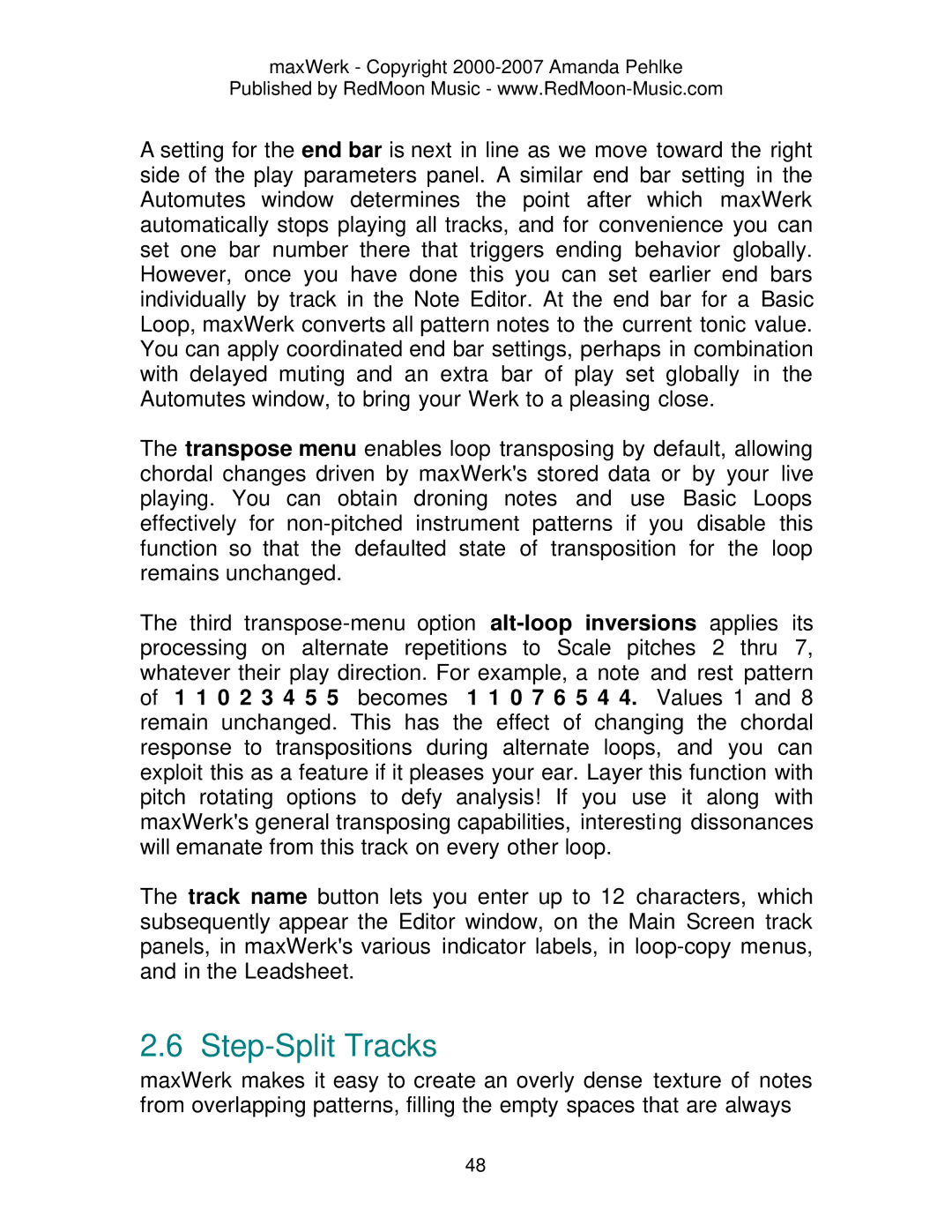maxWerk - Copyright 2000-2007 Amanda Pehlke
Published by RedMoon Music -
A setting for the end bar is next in line as we move toward the right side of the play parameters panel. A similar end bar setting in the Automutes window determines the point after which maxWerk automatically stops playing all tracks, and for convenience you can set one bar number there that triggers ending behavior globally. However, once you have done this you can set earlier end bars individually by track in the Note Editor. At the end bar for a Basic Loop, maxWerk converts all pattern notes to the current tonic value. You can apply coordinated end bar settings, perhaps in combination with delayed muting and an extra bar of play set globally in the Automutes window, to bring your Werk to a pleasing close.
The transpose menu enables loop transposing by default, allowing chordal changes driven by maxWerk's stored data or by your live playing. You can obtain droning notes and use Basic Loops effectively for
The third
The track name button lets you enter up to 12 characters, which subsequently appear the Editor window, on the Main Screen track panels, in maxWerk's various indicator labels, in
2.6 Step-Split Tracks
maxWerk makes it easy to create an overly dense texture of notes from overlapping patterns, filling the empty spaces that are always
48
